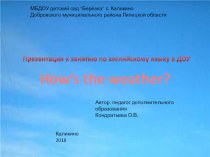- Главная
- Разное
- Бизнес и предпринимательство
- Образование
- Развлечения
- Государство
- Спорт
- Графика
- Культурология
- Еда и кулинария
- Лингвистика
- Религиоведение
- Черчение
- Физкультура
- ИЗО
- Психология
- Социология
- Английский язык
- Астрономия
- Алгебра
- Биология
- География
- Геометрия
- Детские презентации
- Информатика
- История
- Литература
- Маркетинг
- Математика
- Медицина
- Менеджмент
- Музыка
- МХК
- Немецкий язык
- ОБЖ
- Обществознание
- Окружающий мир
- Педагогика
- Русский язык
- Технология
- Физика
- Философия
- Химия
- Шаблоны, картинки для презентаций
- Экология
- Экономика
- Юриспруденция
Что такое findslide.org?
FindSlide.org - это сайт презентаций, докладов, шаблонов в формате PowerPoint.
Обратная связь
Email: Нажмите что бы посмотреть
Презентация на тему Lecture 3american communicative behavior
Содержание
- 2. Plan Culture-Related Communication PatternsVerbal Communicative BehaviorNon-verbal Communicative BehaviorRussian and American Differences in Communication
- 3. Culture-Related Communication PatternsThe Cooperation Principle (P. Grice,
- 4. Culture-Related Communication PatternsPoliteness Maxims (G. Leech) tactgenerosityapprobationmodestyagreementsympathy
- 5. Culture-Related Communication PatternsThe “face” notion (Goffman, 1967)
- 6. Styles of Communication Direct/ low contextIndirect/ high
- 7. Characteristics and Behaviors 1. Communication is like
- 8. Taboos Taboos are consciously-avoided words and expressionsAmerican
- 10. Examples of EuphemismsThe caretaker was accused by
- 11. Politeness-Related Russian and American Differences Rs
- 12. Problems Related to Processing Information (Russians)Communication style
- 13. Non-Verbal BehaviorMost nonverbal communication is unconscious or subconsciousOccurs mostly face-to-face
- 14. Three factors in Message Interpretation
- 15. Non-Verbal Behavior Proxemics (space)Kinesics (body movements, gestures, facial expressions)Chronemics (time)Chromatics (color)Paralanguage (pitch, volume, intonation)SilenceSign language
- 16. Proxemics and U.S. Culture Intimate distance for
- 18. Kinesics: facial expression Birdwhistle (1970): the face is capable of conveying 250,000 expressions
- 19. Body Language Body postureGesturesFacial expressionEye movements
- 20. Скачать презентацию
- 21. Похожие презентации
Plan Culture-Related Communication PatternsVerbal Communicative BehaviorNon-verbal Communicative BehaviorRussian and American Differences in Communication
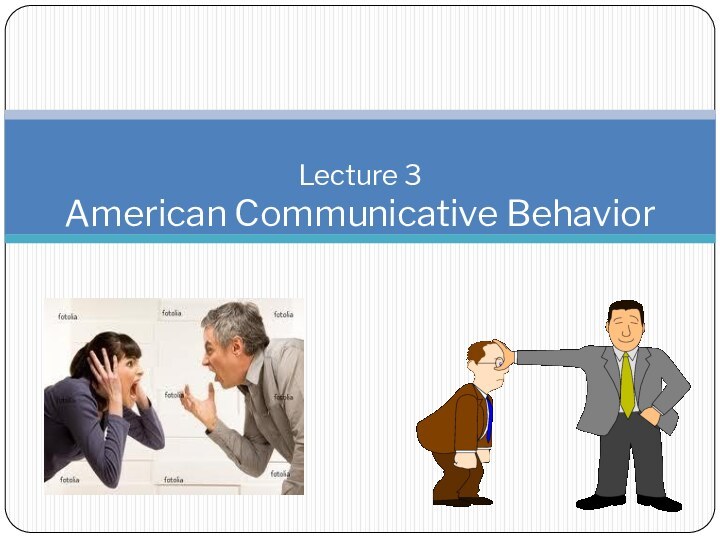
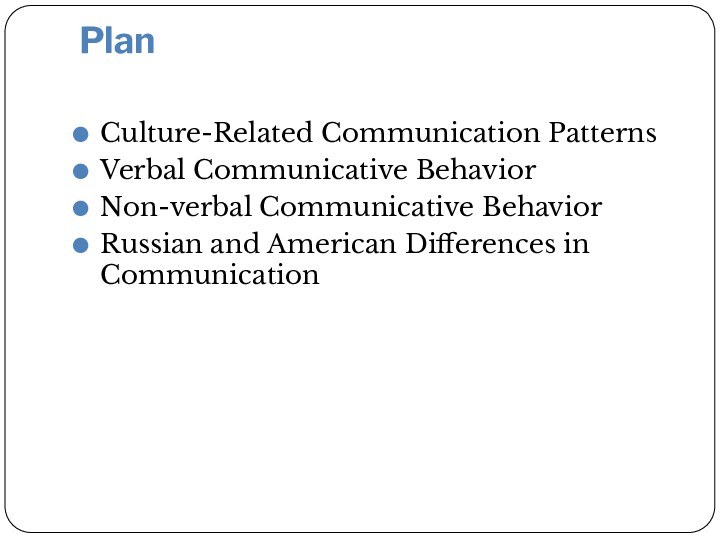
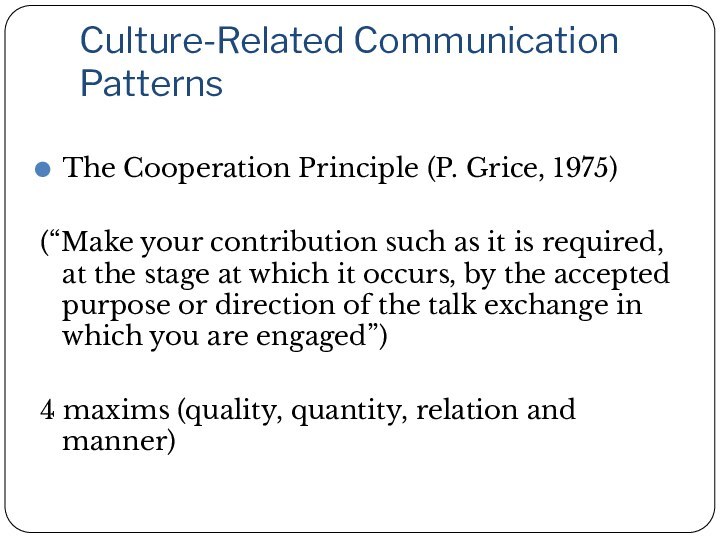
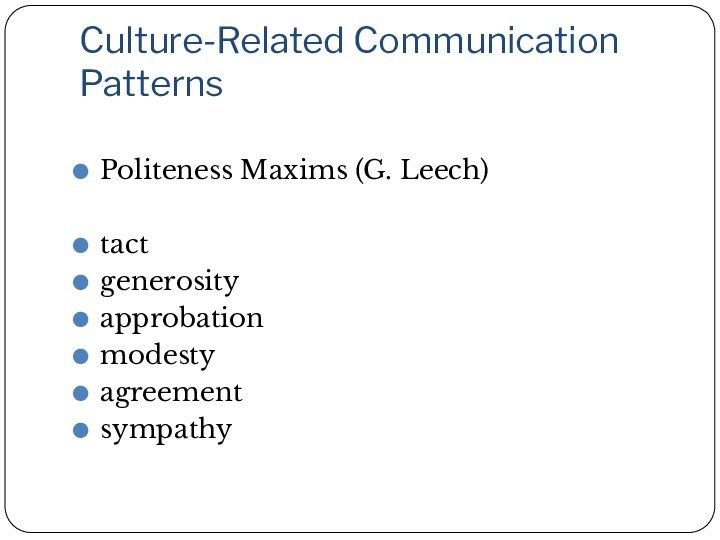

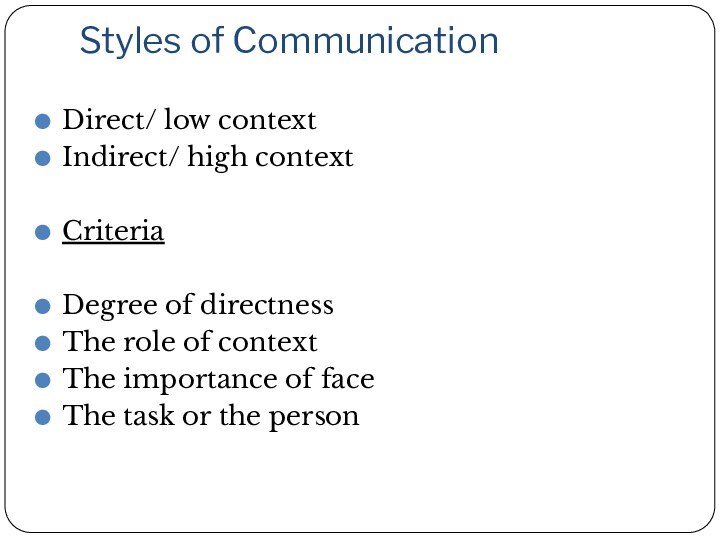
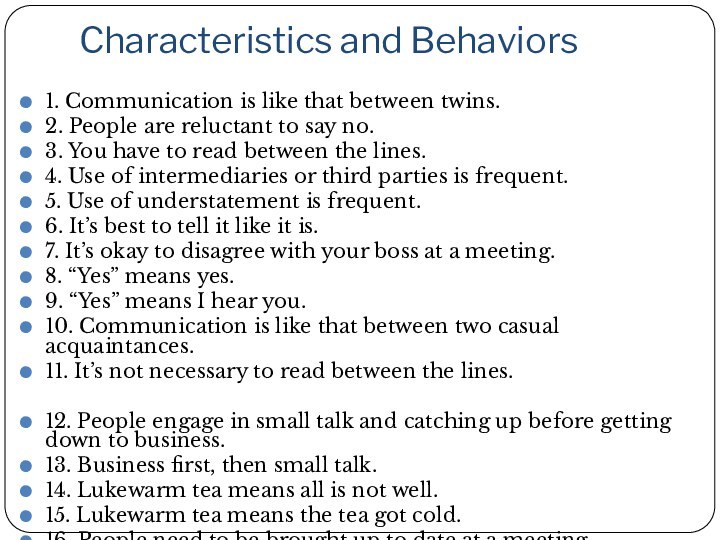
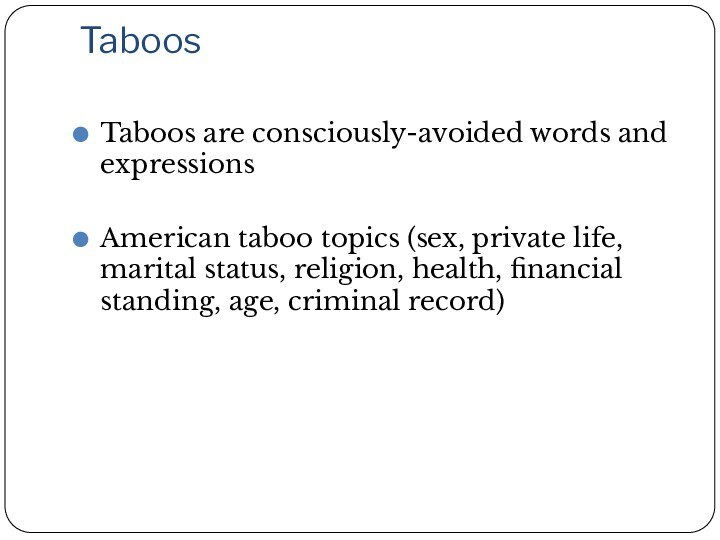
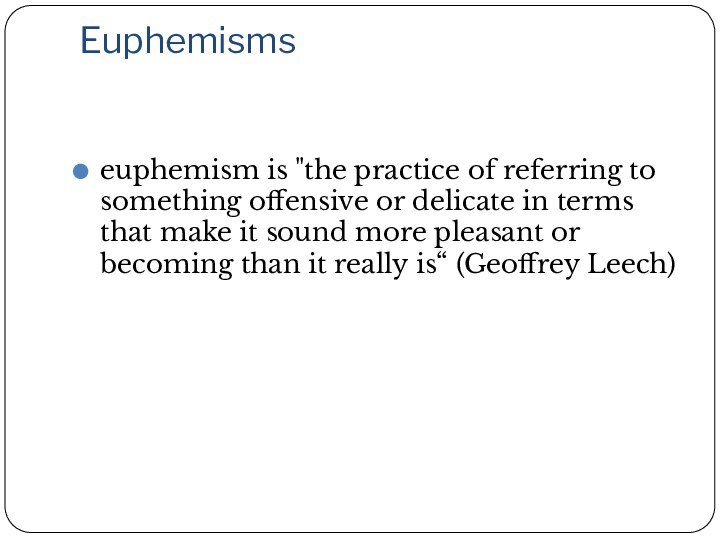
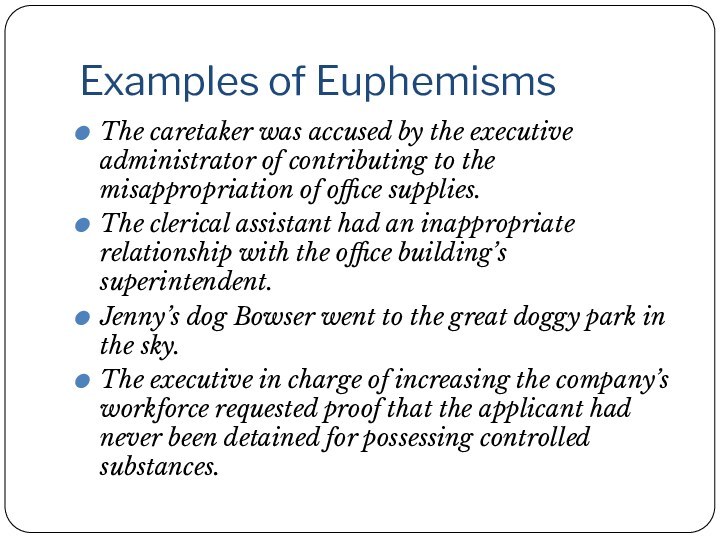
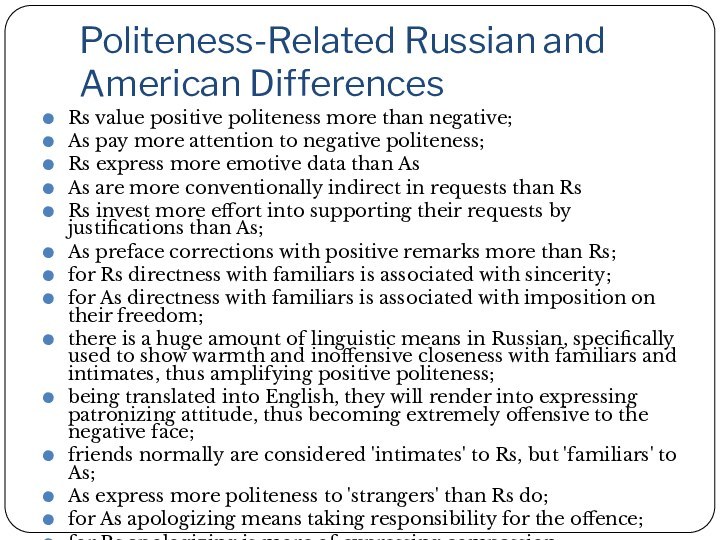
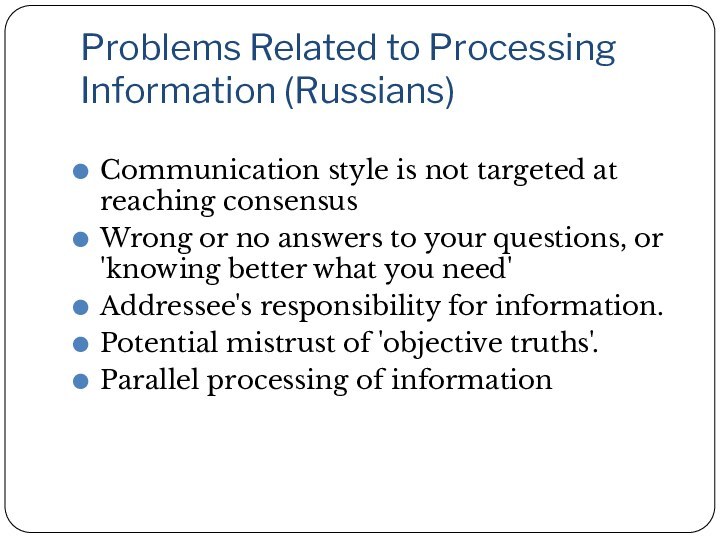
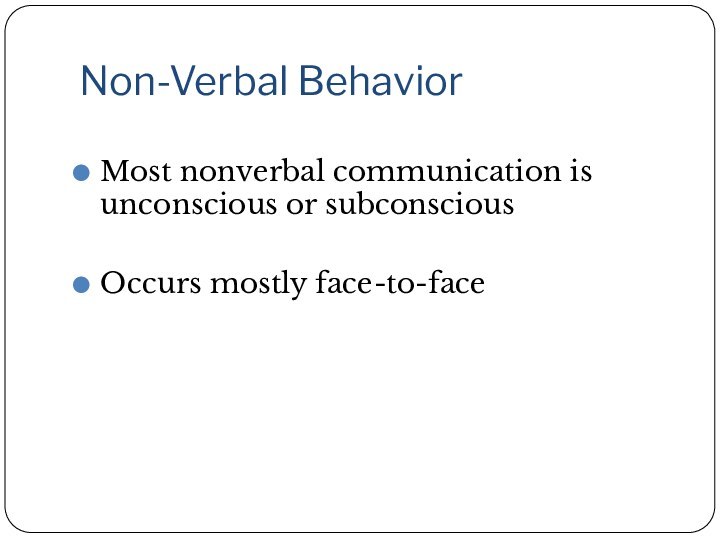
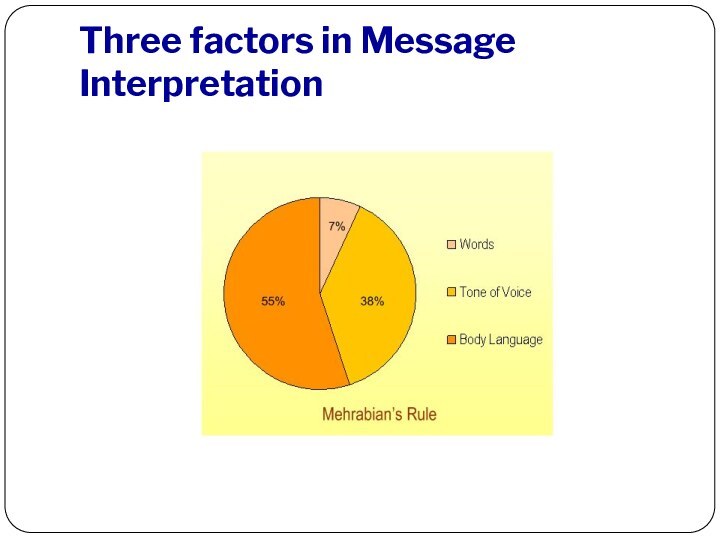
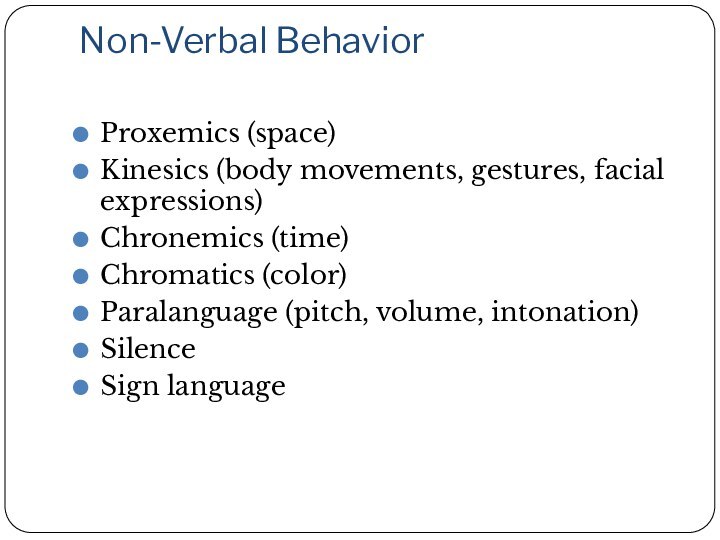
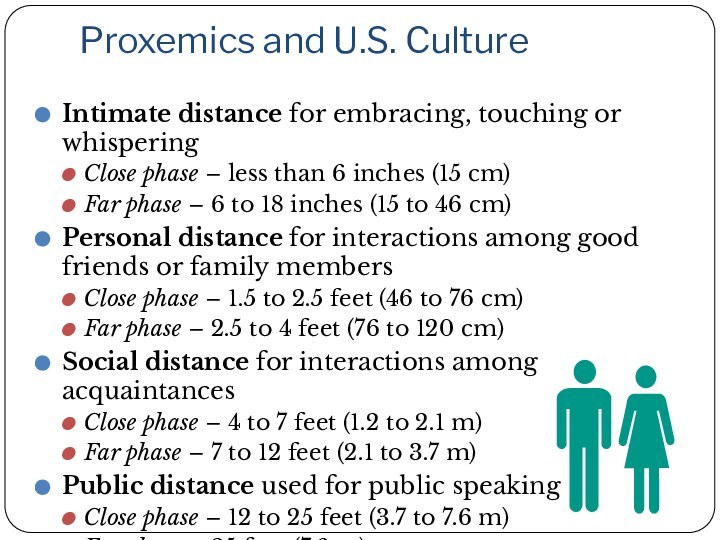
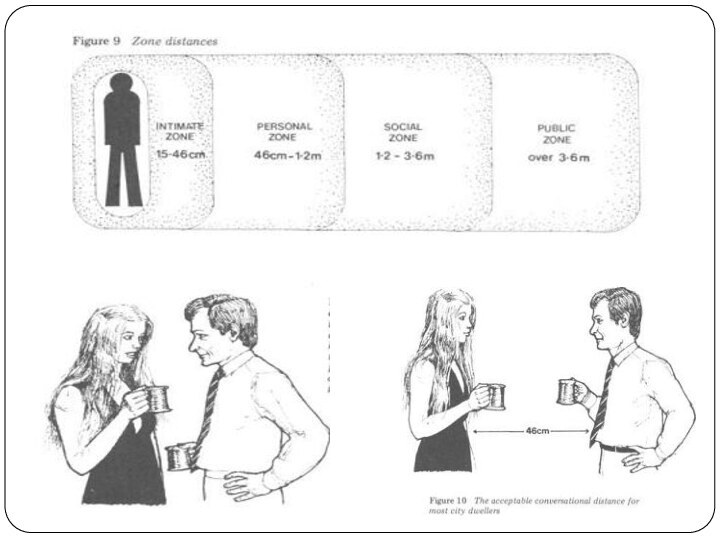
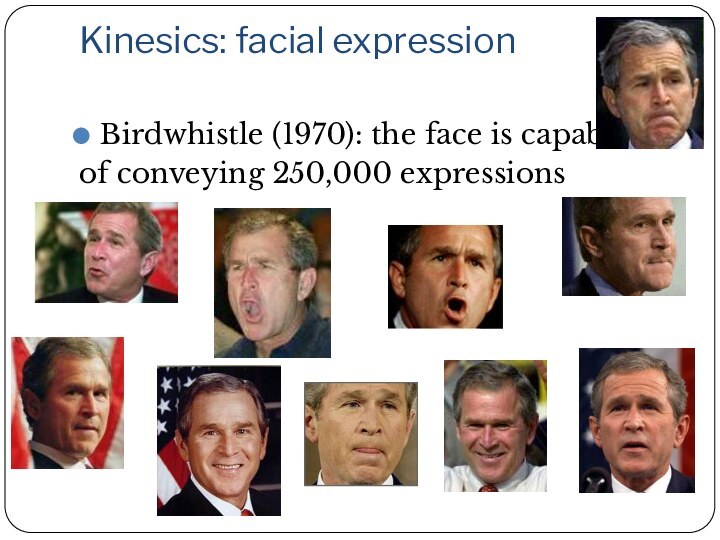
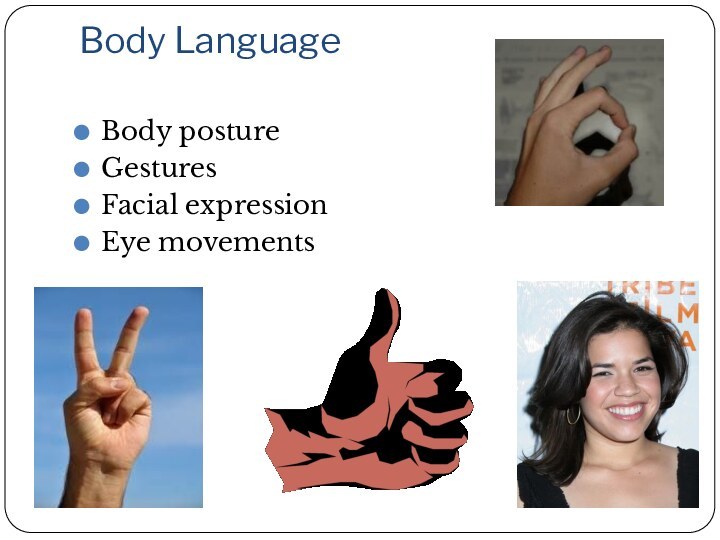
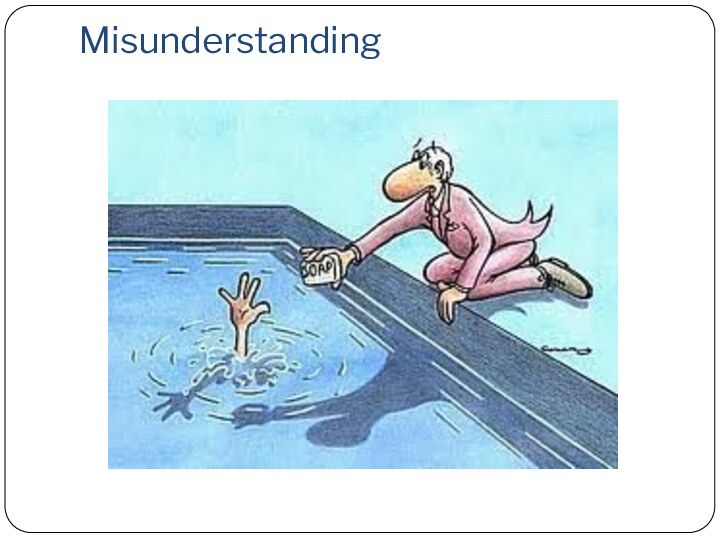
Слайд 2
Plan
Culture-Related Communication Patterns
Verbal Communicative Behavior
Non-verbal Communicative Behavior
Russian and
American Differences in Communication
Слайд 3
Culture-Related Communication Patterns
The Cooperation Principle (P. Grice, 1975)
(“Make
your contribution such as it is required, at the
stage at which it occurs, by the accepted purpose or direction of the talk exchange in which you are engaged”)4 maxims (quality, quantity, relation and manner)
Слайд 4
Culture-Related Communication Patterns
Politeness Maxims (G. Leech)
tact
generosity
approbation
modesty
agreement
sympathy
Слайд 5
Culture-Related Communication Patterns
The “face” notion (Goffman, 1967) (“the
positive social value a person effectively claims for himself
by the line others assume he has taken during a particular contact"Politeness Theory (P. Brown and S. Levinson, 1978) (positive and negative face)
Слайд 6
Styles of Communication
Direct/ low context
Indirect/ high context
Criteria
Degree of
directness
The role of context
The importance of face
The task or
the person
Слайд 7
Characteristics and Behaviors
1. Communication is like that between
twins.
2. People are reluctant to say no.
3. You have
to read between the lines.4. Use of intermediaries or third parties is frequent.
5. Use of understatement is frequent.
6. It’s best to tell it like it is.
7. It’s okay to disagree with your boss at a meeting.
8. “Yes” means yes.
9. “Yes” means I hear you.
10. Communication is like that between two casual acquaintances.
11. It’s not necessary to read between the lines.
12. People engage in small talk and catching up before getting down to business.
13. Business first, then small talk.
14. Lukewarm tea means all is not well.
15. Lukewarm tea means the tea got cold.
16. People need to be brought up to date at a meeting.
17 People are already up to date.
18. The rank/status of the messenger is as important as the message.
19. The message is what counts, not who the messenger is.
20. People tell you what they think you want to hear.
Слайд 8
Taboos
Taboos are consciously-avoided words and expressions
American taboo topics
(sex, private life, marital status, religion, health, financial standing,
age, criminal record)
Слайд 9
Euphemisms
euphemism is "the practice of referring to something
offensive or delicate in terms that make it sound
more pleasant or becoming than it really is“ (Geoffrey Leech)
Слайд 10
Examples of Euphemisms
The caretaker was accused by the
executive administrator of contributing to the misappropriation of office
supplies.The clerical assistant had an inappropriate relationship with the office building’s superintendent.
Jenny’s dog Bowser went to the great doggy park in the sky.
The executive in charge of increasing the company’s workforce requested proof that the applicant had never been detained for possessing controlled substances.
Слайд 11
Politeness-Related Russian and American Differences
Rs value positive
politeness more than negative;
As pay more attention to
negative politeness; Rs express more emotive data than As
As are more conventionally indirect in requests than Rs
Rs invest more effort into supporting their requests by justifications than As;
As preface corrections with positive remarks more than Rs;
for Rs directness with familiars is associated with sincerity;
for As directness with familiars is associated with imposition on their freedom;
there is a huge amount of linguistic means in Russian, specifically used to show warmth and inoffensive closeness with familiars and intimates, thus amplifying positive politeness;
being translated into English, they will render into expressing patronizing attitude, thus becoming extremely offensive to the negative face;
friends normally are considered 'intimates' to Rs, but 'familiars' to As;
As express more politeness to 'strangers' than Rs do;
for As apologizing means taking responsibility for the offence;
for Rs apologizing is more of expressing compassion.
Слайд 12
Problems Related to Processing Information (Russians)
Communication style is
not targeted at reaching consensus
Wrong or no answers to
your questions, or 'knowing better what you need'Addressee's responsibility for information.
Potential mistrust of 'objective truths'.
Parallel processing of information
Слайд 13
Non-Verbal Behavior
Most nonverbal communication is unconscious or subconscious
Occurs
mostly face-to-face
Слайд 15
Non-Verbal Behavior
Proxemics (space)
Kinesics (body movements, gestures, facial expressions)
Chronemics
(time)
Chromatics (color)
Paralanguage (pitch, volume, intonation)
Silence
Sign language
Слайд 16
Proxemics and U.S. Culture
Intimate distance for embracing, touching
or whispering
Close phase – less than 6 inches (15 cm)
Far
phase – 6 to 18 inches (15 to 46 cm)Personal distance for interactions among good friends or family members
Close phase – 1.5 to 2.5 feet (46 to 76 cm)
Far phase – 2.5 to 4 feet (76 to 120 cm)
Social distance for interactions among acquaintances
Close phase – 4 to 7 feet (1.2 to 2.1 m)
Far phase – 7 to 12 feet (2.1 to 3.7 m)
Public distance used for public speaking
Close phase – 12 to 25 feet (3.7 to 7.6 m)
Far phase – 25 feet (7.6 m) or more







